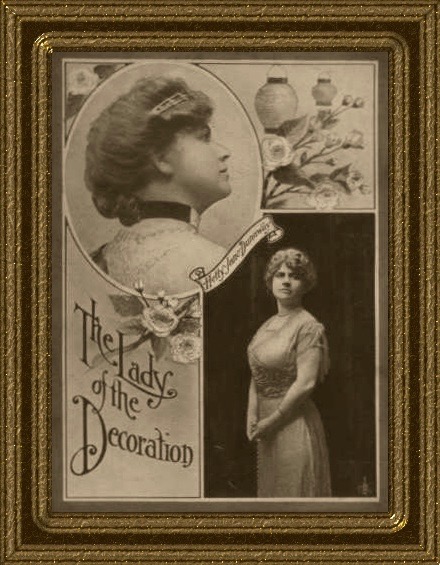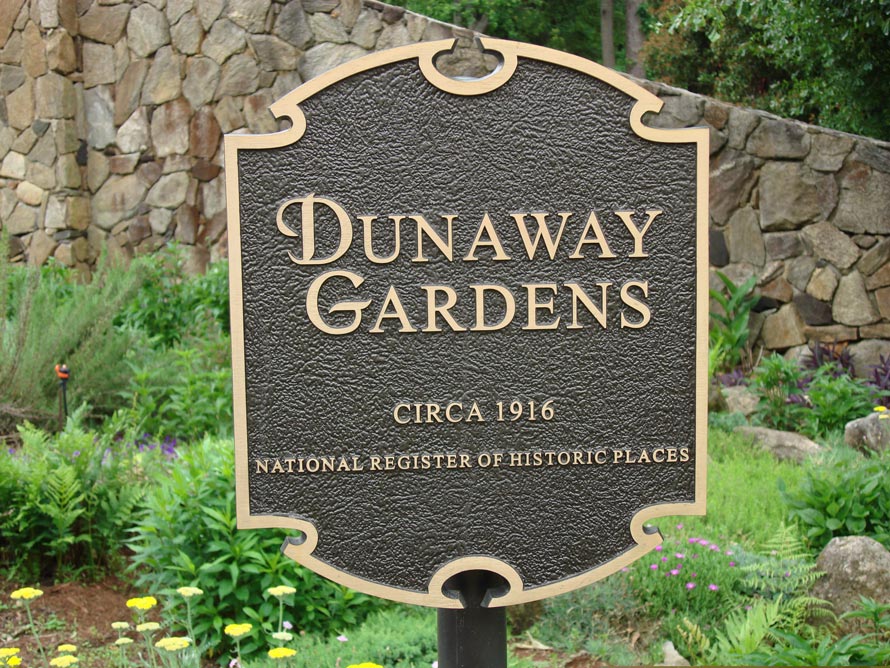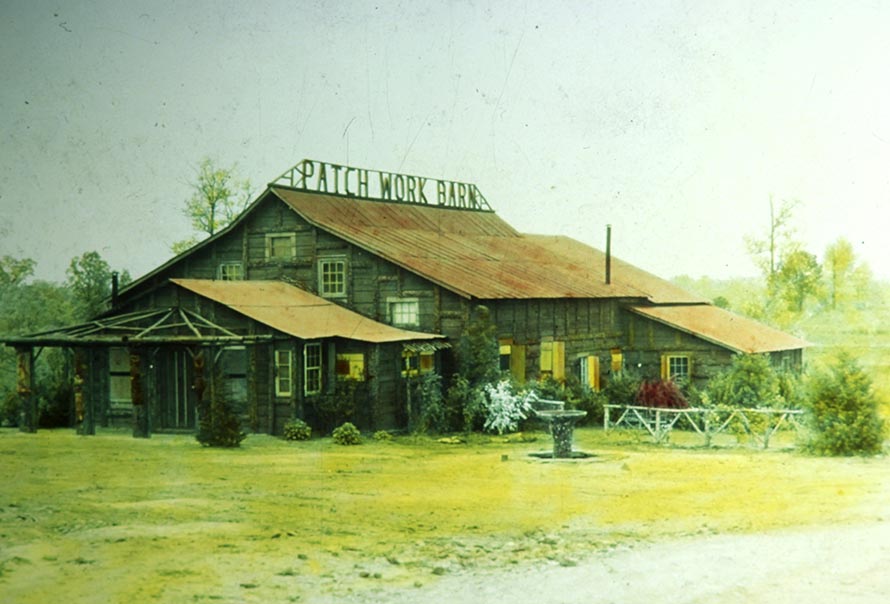

Listed in the National Register of Historic Places, Dunaway Gardens was established by famous stage actress Hetty Jane Dunaway on what was then her husband Wayne P. Sewell’s sprawling ancestral plantation. Dunaway Gardens was a theatrical training ground for producers, directors, and performers of the arts during the golden years of the 20’s, 30’s, and 40’s. It was also a popular retreat for locals and celebrities alike, including Walt Disney, who frequented the gardens, and Minnie Pearl, who got her start at Dunaway Gardens.
In its heyday the gardens played host to ballet troupes, indoor and outdoor theatre performances, and a steady stream of fans who came to enjoy not only the spectacular shows, filled with comedic twists and cameo appearances by locals, but the delicious food at the quaint Blue Bonnet Tea Room, a popular gathering spot. When the pace of the gardens eventually slowed, Dunaway Gardens and her history began to disappear. For nearly half a century, the gardens were forgotten altogether, buried beneath a blanket of vines and kudzu until her gates reopened in 2005, ready, once again, for fans and botanical garden enthusiasts to enjoy.


This brief tour of Dunaway offers scenes of the gardens as they were in its heyday alternating with scenes of the gardens as they appear today. Those original days were a time of spirited, carefree fun, a time when dreams and creative energy collided, giving rise to one woman’s gift to humanity.
The story of Dunaway Gardens began when famous stage actress Hetty Jane Dunaway met dashing booking agent Wayne P. Sewell. Hetty Jane was a talented, vivacious actress from Arkansas, who rose to fame as one of the most popular on the Chautauqua Circuit. When her traveling show brought her in contact with the Wayne P. Sewell Production company in Atlanta, a courtship began and eventually marriage. The pair made their home on the Sewell’s family plantation near Roscoe, Georgia. Here, her imagination and creativity led her to see something more in the rural landscape than just red clay, farm land, and rolling cotton fields. Her dream of a storybook garden as a setting for a theatrical training center came true, painstakingly nurtured over the course of some 18 years.
Those exciting years brought many professional and world renowned groups to the gardens. The gardens were originally composed of a variety of areas such as the Arrowhead Pools, a terraced Amphitheater that would seat over a thousand people, the Blue Bonnet Tea Room, the Patchwork Barn indoor theater, the Wedding Tree, and the Honeymoon House called Shangri-la. The area known as “Little Stone Mountain” is greater than one acre of solid granite.
Restoration of this memorable site began in the summer of 2000. Dunaway Gardens is now described as one of the south’s largest natural rock and floral gardens. There are spring-fed pools, stone waterfalls and extensive hand-laid rock paths, walls, and staircases throughout the approximately twenty five acre tract.

To read and view more historical promotional flyers of Hettie Jane Dunaway and the Dunaway Concert Company click on the University of Iowa Libraries special collections department links below.